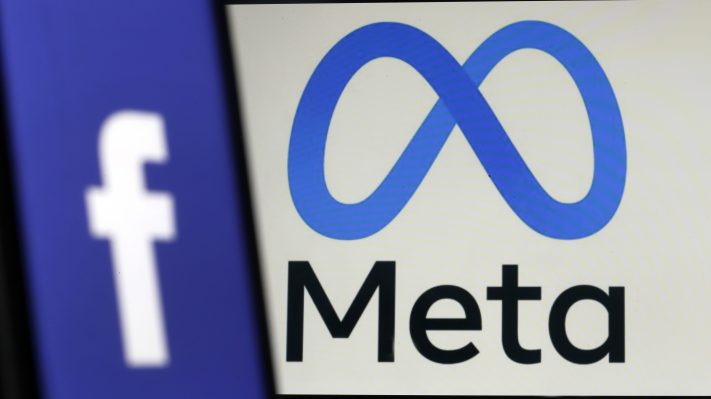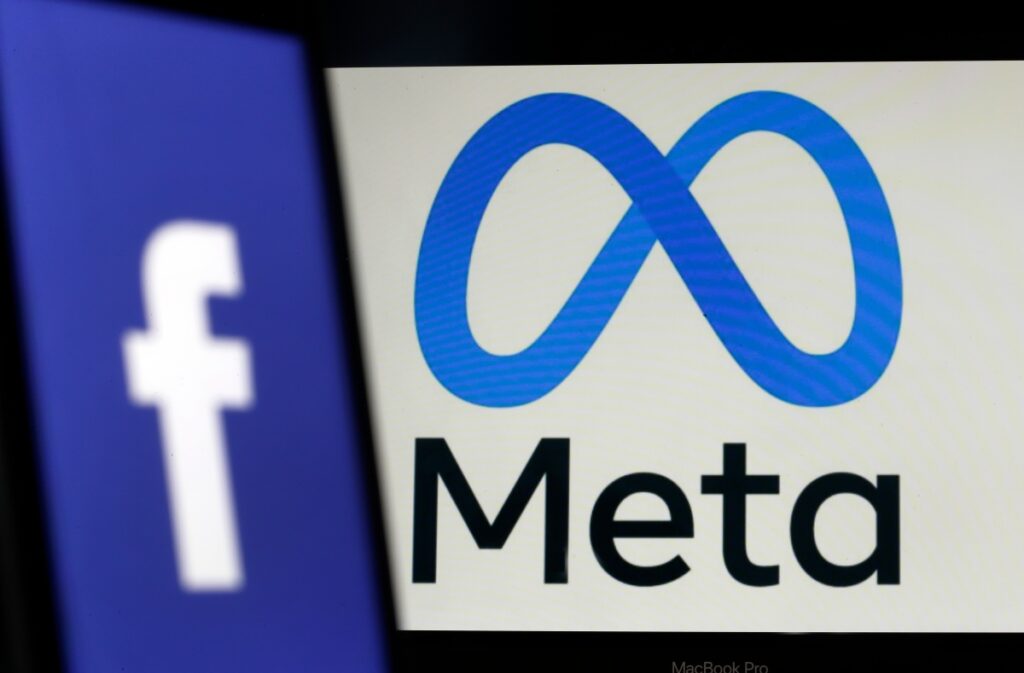Meta to broaden labelling of AI-generated imagery in election packed 12 months
Natasha Lomas @riptari /
22 hours

Meta is increasing the labelling of AI-generated imagery on its social media platforms, Fb, Instagram and Threads, to cowl some artificial imagery that’s been created utilizing rivals’ generative AI instruments — no less than the place rivals are utilizing what it couches as “trade commonplace indicators” that the content material is AI-generated and which Meta is ready to detect.
The event means the social media large expects to be labelling extra AI-generated imagery circulating on its platforms going ahead. But it surely’s additionally not placing figures on any of these items — i.e. how a lot artificial vs genuine content material is routinely being pushed at customers — so how important a transfer this may be within the combat towards AI-fuelled dis- and misinformation (in an enormous 12 months for elections, globally) is unclear.
Meta says it already detects and labels “photorealistic pictures” which have been created with its personal “Think about with Meta” generative AI software, which launched final December. However, thus far, it hasn’t been labelling artificial imagery created utilizing different firm’s instruments. So that is the (child) step it’s asserting right now.
“[W]e’ve been working with trade companions to align on frequent technical requirements that sign when a bit of content material has been created utilizing AI,” wrote Meta president, Nick Clegg, in a weblog publish asserting the enlargement of labelling. “Having the ability to detect these alerts will make it attainable for us to label AI-generated pictures that customers publish to Fb, Instagram and Threads.”
Per Clegg, Meta will likely be rolling out expanded labelling “within the coming months”; and making use of labels in “all languages supported by every app”.
A spokesman for Meta couldn’t present a extra particular timeline; nor any particulars on which orders markets will likely be getting the additional labels once we requested for extra. However Clegg’s publish suggests the rollout will likely be gradual — “via the following 12 months” — and will see Meta specializing in election calendars world wide to tell choices about when and the place to launch the expanded labelling in numerous markets.
“We’re taking this method via the following 12 months, throughout which various essential elections are going down world wide,” he wrote. “Throughout this time, we anticipate to be taught far more about how individuals are creating and sharing AI content material, what kind of transparency folks discover most useful, and the way these applied sciences evolve. What we be taught will inform trade finest practices and our personal method going ahead.”
Meta’s method to labelling AI-generated imagery depends upon detection powered by each seen marks which are utilized to artificial pictures by its generative AI tech and “invisible watermarks” and metadata the software additionally embeds with file pictures. It’s these similar kinds of alerts, embedded by rivals’ AI image-generating instruments, that Meta’s detection tech will likely be on the lookout for, per Clegg — who notes it’s been working with different AI firms, through boards just like the Partnership on AI, with the purpose of creating frequent requirements and finest practices for figuring out generative AI.
His weblog publish doesn’t spell out the extent of others’ efforts in direction of this finish. However Clegg implies Meta will — within the coming 12 months — have the ability to detect AI-generated imagery from instruments made by Google, OpenAI, Microsoft, Adobe, Midjourney and Shutterstock, in addition to its personal AI picture instruments.
What about AI-generated video and audio?
Relating to AI-generated movies and audio, Clegg suggests it’s usually nonetheless too difficult to detect these sort of fakes — as a result of marking and watermarking has but to be adopted at sufficient scale for detection instruments to do a superb job. Moreover, such alerts might be stripped out, via modifying and additional media manipulation.
“[I]t’s not but attainable to establish all AI-generated content material, and there are methods that individuals can strip out invisible markers. So we’re pursuing a variety of choices,” he wrote. “We’re working exhausting to develop classifiers that may assist us to robotically detect AI-generated content material, even when the content material lacks invisible markers. On the similar time, we’re on the lookout for methods to make it harder to take away or alter invisible watermarks.
“For instance, Meta’s AI Analysis lab FAIR just lately shared analysis on an invisible watermarking expertise we’re creating referred to as Secure Signature. This integrates the watermarking mechanism straight into the picture era course of for some forms of picture turbines, which might be helpful for open supply fashions so the watermarking can’t be disabled.”
Given the hole between what’s technically attainable on the AI era versus detection facet, Meta is altering its coverage to require customers who publish “photorealistic” AI-generated video or “realistic-sounding” audio to tell it that the content material is artificial — and Clegg says it’s reserving the correct to label the content material if it deems it “notably excessive danger of materially deceiving the general public on a matter of significance”.
If the consumer fails to make this handbook disclosure they may face penalties — below Meta’s current Neighborhood Requirements. (So account suspensions, bans and many others.)
“Our Neighborhood Requirements apply to everybody, all world wide and to all forms of content material, together with AI-generated content material,” Meta’s spokesman advised us when requested what kind of sanctions customers who fail to make a disclosure might face.
Whereas Meta is keenly heaping consideration on the dangers round AI-generated fakes, it’s price remembering that manipulation of digital media is nothing new and deceptive folks at scale doesn’t require fancy generative AI instruments. Entry to a social media account and extra primary media modifying abilities are all it could take to make a faux that goes viral.
On this entrance, a latest determination by the Oversight Board, a Meta-established content material assessment physique — which checked out its determination to not take away an edited video of president Biden along with his granddaughter which had been manipulated to falsely recommend inappropriate touching — urged the tech large to rewrite what it described as “incoherent” insurance policies with regards to faked movies. The Board particularly referred to as out Meta’s concentrate on AI-generated content material on this context.
“Because it stands, the coverage makes little sense,” wrote Oversight Board co-chair Michael McConnell. “It bans altered movies that present folks saying issues they don’t say, however doesn’t prohibit posts depicting a person doing one thing they didn’t do. It solely applies to video created via AI, however lets different faux content material off the hook.”
Requested whether or not, in gentle of the Board’s assessment, Meta is trying at increasing its insurance policies to make sure non-AI-related content material manipulation dangers are usually not being ignored, its spokesman declined to reply, saying solely: “Our response to this determination will likely be shared on our transparency centre throughout the 60 day window.”
LLMs as a content material moderation software
Clegg’s weblog publish additionally discusses the (to this point “restricted”) use of generative AI by Meta as a software for serving to it implement its personal insurance policies — and the potential for GenAI to take up extra of the slack right here, with the Meta president suggesting it might flip to giant language fashions (LLMs) to help its enforcement efforts throughout moments of “heightened danger”, resembling elections.
“Whereas we use AI expertise to assist implement our insurance policies, our use of generative AI instruments for this goal has been restricted. However we’re optimistic that generative AI might assist us take down dangerous content material quicker and extra precisely. It is also helpful in imposing our insurance policies throughout moments of heightened danger, like elections,” he wrote.
“We’ve began testing Giant Language Fashions (LLMs) by coaching them on our Neighborhood Requirements to assist decide whether or not a bit of content material violates our insurance policies. These preliminary exams recommend the LLMs can carry out higher than current machine studying fashions. We’re additionally utilizing LLMs to take away content material from assessment queues in sure circumstances once we’re extremely assured it doesn’t violate our insurance policies. This frees up capability for our reviewers to concentrate on content material that’s extra more likely to break our guidelines.”
So we now have Meta experimenting with generative AI as a complement to its commonplace AI-powered content material moderation efforts in a bid to scale back the quantity of poisonous content material that will get pumped into the eyeballs and brains of overworked human content material reviewers, with all of the trauma dangers that entails.
AI alone couldn’t repair Meta’s content material moderation downside — whether or not AI plus GenAI can do it appears uncertain. But it surely may assist the tech large extract better efficiencies at a time when the tactic of outsourcing poisonous content material moderation to low paid people is going through authorized challenges throughout a number of markets.
Clegg’s publish additionally notes that AI-generated content material on Meta’s platforms is “eligible to be fact-checked by our unbiased fact-checking companions” — and will, due to this fact, even be labelled as debunked (i.e. along with being labelled as AI-generated; or “Imagined by AI”, as Meta’s present GenAI picture labels have it). Which, frankly, sounds more and more complicated for customers attempting to navigate the credibility of stuff they see on its social media platforms — the place a bit of content material could get a number of signposts utilized to it, only one label, or none in any respect.
Clegg additionally avoids any dialogue of the continual asymmetry between the provision of human fact-checkers, a useful resource that’s usually supplied by nonprofit entities which have restricted money and time to debunk primarily limitless digital fakes; and all kinds of malicious actors with entry to social media platforms, fuelled by myriad incentives and funders, who’re in a position to weaponize more and more broadly out there and highly effective AI instruments (together with these Meta itself is constructing and offering to gas its content-dependent enterprise) to massively scale disinformation threats.
With out strong information on the prevalence of artificial vs genuine content material on Meta’s platforms, and with out information on how efficient its AI faux detection programs really are, there’s little we will conclude — past the plain: Meta is feeling below strain to be seen to be doing one thing in a 12 months when election-related fakes will, undoubtedly, command plenty of publicity.




